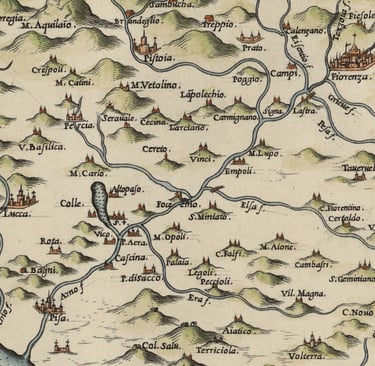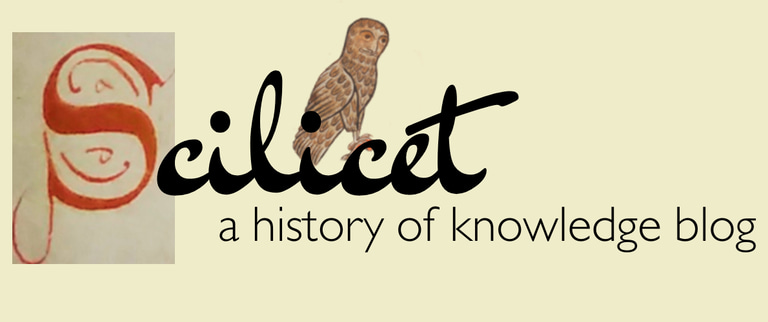Many of us can recall the unhappy times of the Covid pandemic, with its confusion, everchanging restrictions, and concern for the health of ourselves and our loved ones. We were, of course, not the first to deal with such circumstances, and at the height of the Covid pandemic the so-called Spanish flu pandemic of 1918-20, and the Black Death were often mentioned as historical precedents.
A set of ordinances from the Tuscan city of Pistoia circulated in 1348 in response to the newly arrived plague may look oddly familiar to us. This pandemic, which came to be known as the bubonic plague or Black Death, was caused by the bacterium Yersinia pestis, and was very nasty indeed.
It was probably carried by fleas who were themselves carried by rats who were in turn carried by ships – which is why the disease often appeared first in port cities, before spreading inland. But when people started catching it themselves, they proved perfectly capable of giving it to one another. The exact form of transmission is still debated by scientists today, but what was the opinion of medieval people encountering it for the first time?
The main concern in the fourteenth century was that the plague was airborne through ‘bad air’ or miasma (we wrote about it here). They also knew to beware people who were ill, things that they have touched, and indeed their deceased bodies, as the selection of translated ordinances show.
Ordinances on Sanitation at the time of the Plague
In the name of Christ amen.
Written below are certain ordinances and provisions on maintaining and addressing the health of the human body and resisting various different plagues…
The year of the Lord 1348
1. Firstly… so that no matter of ill-health which at present exists in the areas around the city of Pistoia could reach it… [the council orders] that no one may dare or presume in any way to go to the city of Pisa or Lucca or their countryside or districts…


A map of Tuscany (1554 by Hieronimo Bell’armato).
2. Item, they order… that no one may dare or presume in any way to collect, bring or have brought to the city of Pistoia… any used cloths, neither linen nor woollen, to be used by men or women or as bedsheets… and just the same, these cloths must be burnt in the commune’s piazza by a city official…
3. Item, the order… that dead bodies, after they have died, could not be removed from where they lay, unless such a corpse is first put in a wooden coffin so that no foul odour could get out of it.
5. Item, they order… that no one may dare or presume to bring back or carry any dead body into the city of Pistoia either in a coffin or outside a coffin…
10. Item… so that the sound of bells will not disturb the frail, nor raise fears against them, [legislators order] that bellringers of the cathedral of Pistoia must not permit any bells to be rung for the occasions of funerals…


Danse macabre scene in St. Nicholas' Church, Tallinn (Late 15th century).
Ordinamenta sanitatis tempore mortalitatis
In Christi nomine amen. Infrascripta sunt quedam ordinamenta et provisiones … super sanitate humani corporis conservanda et replimendo et resistendo variis et diversis pistolentiis…
Anno domini a nativitate MCCCXLVIII, Ind. prima.
I - Imprimis… providerunt et ordinaverunt... ut nulla materia infirmitatis que ad presens insistis in partibus circumstantibus civitatis Pistorii possit devenire… quod nulla persona… audeat vel presumat quoquo modo ire ad civitate Pisanam vel Lucanam aut ad earum vel alicuius earum comitatum vel districum…
II – Item providerunt et ordinaverunt… quod nulla persona… audeat vel presumat quoquo modo conducere, reducere, vel conduci aut reduci facere ad civitate Pistorii … aliquos pannos veteres tam lineos quam laneos, ad usum hominis vel mulieris aut ad lectum deputatos… Et nihilominus ipsi panni debeant comburi facere in platea communis Pistorii per officialem…
III – Item providerunt et ordinaverunt quod corpora mortuorum postquam mortua erunt non possint nec debeant extrahi de loco in quo essent, nisi primo tale corpus defunctum missum fuerit in quadam cassa lingnis… ut nullus fetor exinde exiri possit…
V – Item providerunt et ordinaverunt quod nulla persona… audeat vel presumat reducere et aportare in civitatem Pistorii aliquod corpus mortuum in cassa vel extra cassam…
X – Item providerunt et ordinaverunt … ut sonus campanarum non invadat infirmis, nec contra eos timor insurgat, quod campanarii… maioris ecclesie cathedralis civitatis Pistorii non premictant pulsari aliquam campanam occasione funeris mortuorum…
…
Sources
Archivio di Stato di Pistoia, Comune, Statuti, no. V.
Alberto Chiappelli, ‘Gli ordinamenti sanitari del Comune di Pistoia contro la pestilenza del 1348’, Archivio Storico Italiano, (1887).
Guy Geltner, ‘The Path to Pistoia: Urban Hygiene Before the Black Death’ Past & Present, 246 (2020), pp. 3-33.
